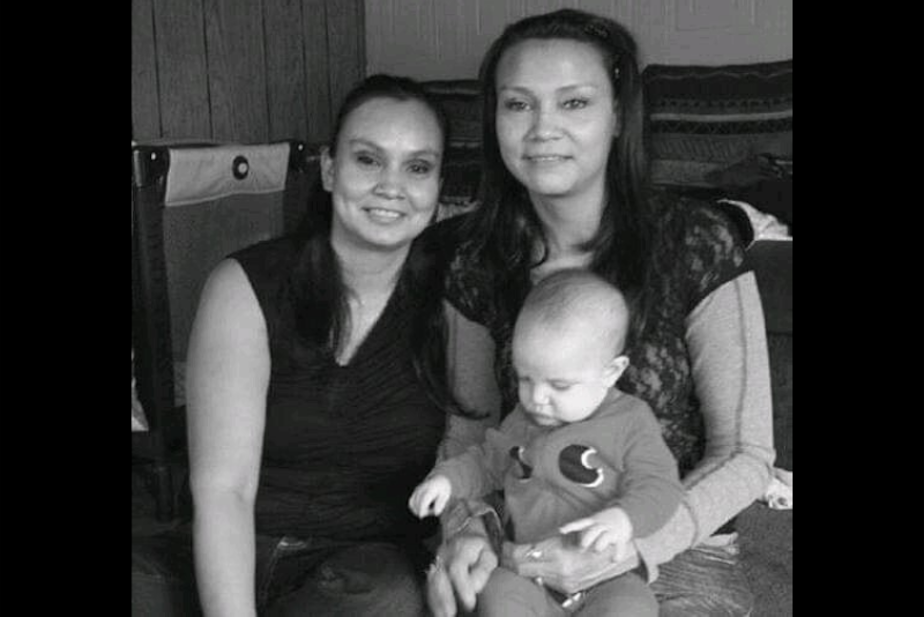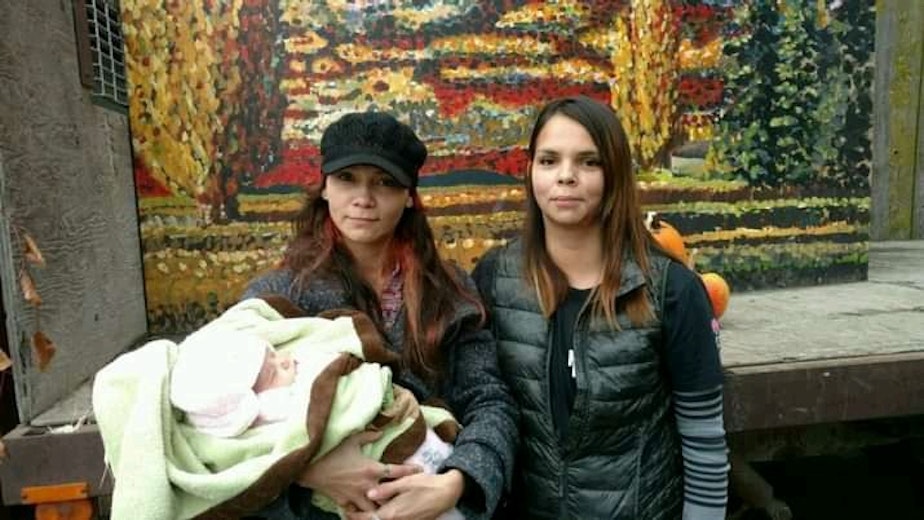Washington lawmakers create first-in-nation alerts for missing Indigenous people

Later this year, Washingtonians may start seeing alerts about missing Indigenous people on highway billboards, your cell phone, or local media. A bill to create a new public alert system for missing Indigenous people has passed both chambers of the state Legislature. It could soon be on its way to Governor Jay Inslee’s desk for his signature to make it official.
The program in Washington would be the first of its kind nationwide.
It’s the latest step in Washington’s movement to address the high rates of missing and murdered Indigenous women, which were spotlighted in recent studies by Seattle’s Urban Indian Health Institute. Representative Debra Lekanoff sponsored HB 1725, the bill to create the new alert system. Lekanoff is a Democrat who represents the Skagit Valley.
RELATED: Seattle has most missing and murdered indigenous women
She is also the state’s only Indigenous lawmaker. She said this bill gives her hope that if she or her teenage daughter disappeared or were in danger, people would be watching for them.
“Native American women have been stolen and have been murdered, and it has been a crisis across this nation for generations,” she said.
Washington Attorney General Bob Ferguson requested the bill, saying Indigenous women go missing and experience violence at the highest rates of any ethnic group in the U.S.
Sponsored
Carri Gordon coordinates all the state’s missing person alerts at the Washington State Patrol. These currently include Amber alerts for abducted children, and Silver alerts for endangered people over age 60.
Gordon said those alerts are incredibly effective -- most people are located within hours. She said she’ll support whatever is mandated, but she does have concerns about expanding the program.
“As an alert coordinator, I do worry about oversaturation and over-alerting the public, and it’s just going to lower the involvement of the public if we just give them too many," Gordon said.
Representative Lekanoff responded that she’d like to see any research about whether that’s a risk.
“It seems to me that making the public aware of our responsibility to take care of one another is what we’ve been moving towards in public safety,” Lekanoff said.
Sponsored
Legislative efforts
The alert system is one of the state’s latest legislative efforts to address these issues.
Representative Gina Mosbrucker, a Republican from Goldendale, has sponsored a series of successful bills over the last five years. The earlier measures resulted in a more comprehensive list of missing Indigenous people on the Washington State Patrol website, and hiring two tribal liaisons at the agency.
Mosbrucker’s latest proposal also passed both chambers of the Legislature last week. HB 1571 will enable family members to visit the place where an Indigenous relative’s body is found, once investigators have signed off.
The state patrol’s “tribal liaisons will connect with the family and say, ‘we have a loved one, we’re very sorry, would you like to come pray over the body before we move it,’” Mosbrucker said.
Sponsored
Her bill will also pilot new centers for trafficking victims to receive wraparound services.
“What the tribes asked for was a ‘serenity house’ if you will, that would just be a safe place with security of some sort to make sure the trafficker didn’t come back," Mosbrucker said.

Navigating the legal system
Each new law, plus a recently launched state task force, is trying to address the barriers that can make it harder to report, investigate and solve these missing persons cases.
Sponsored
Like the case of Mary Johnson-Davis, a member of the Tulalip Tribes who was last seen in November 2020.
Mary’s sisters, Gerry Davis and Nona Blouin, have spearheaded the attempts to find Mary, who was estranged from her husband and attempting to meet someone who had agreed to give her a ride when she disappeared. Gerry Davis said she’s tormented by questions like, “Did somebody take her? Did somebody traffic her?”
There’s now a $60,000 reward for information in her case, offered by the Tulalip Tribes and the FBI. The sisters said interest in Mary’s case benefited from the media focus on non-Native cases like Gabby Petito, a white woman who was likely killed by her partner on a road trip last summer. That coverage prompted an outcry on social media over the lack of attention for missing Indigenous women, and more urgency around Mary’s case.
But Blouin said Mary’s case faces two common barriers that can make cataloguing and solving it more difficult.
One is, Mary was last seen on the reservation, which affects which law enforcement agencies have jurisdiction to investigate.
Sponsored
"The FBI can help, but other organizations such as a sheriff’s department can’t because they can’t cross that, even if they wanted to help. It’s very complicated,” Blouin said.
Blouin also said their ancestry could prevent Mary from being counted as a missing Indigenous person at all. Having more than one racial identity can mean that none of them are reflected in standard data about crime victims.
“We are half Native American and half White," she said. "Or I guess the proper term would be French-Canadian.”
Missing Indigenous people
Abigail Echo-hawk is Executive Vice President of the Seattle Indian Health Board. Her studies have formed the basis for many of Washington state’s new laws and policy changes. Echo-hawk said she’s training law enforcement agencies — including federal agencies — in how to seek and enter more complete data to reflect racial identity.
“They should be able to mark all of those things and we should be able to see that within a data set,” she said. “However, very often there’s just one box and it says ‘multiracial.’ That particular way of data collection is what structural racism looks like. It decides for us our identity.”
Echo-hawk is a co-chair of the state’s new task force on Missing and Murdered Indigenous Women and People.
She said there are some hopeful stories, at least anecdotally – not long ago a local tribe asked for help to find a woman missing in Seattle. “The call to go hang up fliers went out. I took my sons out, we hung up fliers, all in the area of North Seattle,” Echo-hawk said. “And I don’t know if she saw our fliers because I know there were lots of other people who hung them up, but this woman was located. I wish we had many more stories like that.”
There are currently 105 Indigenous people listed as missing on the Washington State Patrol website, which draws its information from the National Crime Information Center.
Tribal liaisons Patti Gosch and Dawn Pullin help people find information about their loved ones and if necessary, report them as missing to their local police departments. Gosch said to her knowledge Washington is the only state that requires law enforcement to add missing people to the database, rather than making it voluntary.
“All adults need to be entered into NCIC if they’ve been missing more than 30 days,” she said. “That wasn’t the case before.”
Gosch said initially the state had just 40 names on the missing Indigenous persons list.
“When we sent the list out to tribal law enforcement and community members they said, ‘no, what about this person,’ and when we started looking into it, we discovered that most people were in the system, but they were in the system incorrectly as another race other than Native American.”
Gosch said the list also reflects that more than a dozen people have since been located. When people see the names they get in touch to report that someone is now living in their community.
“We can’t find people if we can’t see people,” she said. “And so we’re able to clear people as well as make sure they’re in the system.”
Pullin, who is based in Spokane, said sometimes they are able to give distressed family members a ray of hope, even if it’s not final closure.
“For example I had a grandmother reach out to me and because we have access to certain databases, I was able to at least tell her that I know her granddaughter had renewed her drivers license. I could give her some sense of a timeline,” Pullin said. “And I let her know that anyone could file a missing person’s report if they had enough information. So we’re still working on that part.”
Legislators and people working on these new policies said they’re constantly getting inquiries from other states and Canada, where people are eager to learn about the latest steps Washington is taking.
Mary Johnson-Davis’s sister Gerry Davis said she just hopes their efforts can yield some knowledge of her sister’s fate since she was last seen.
“Because we don’t know where she’s at, if she’s OK, if she’s alive or if she’s dead," Blouin added. "We need to know, we need closure. She was just adored by everybody. I miss her so much.”
11/01/2025: This story has been changed to correctly state Mary Johnson-Davis's name.




